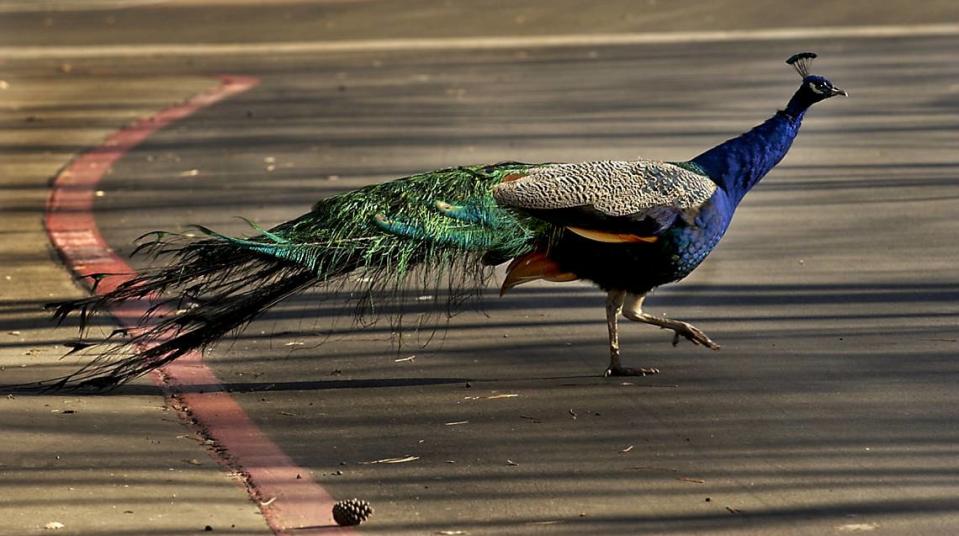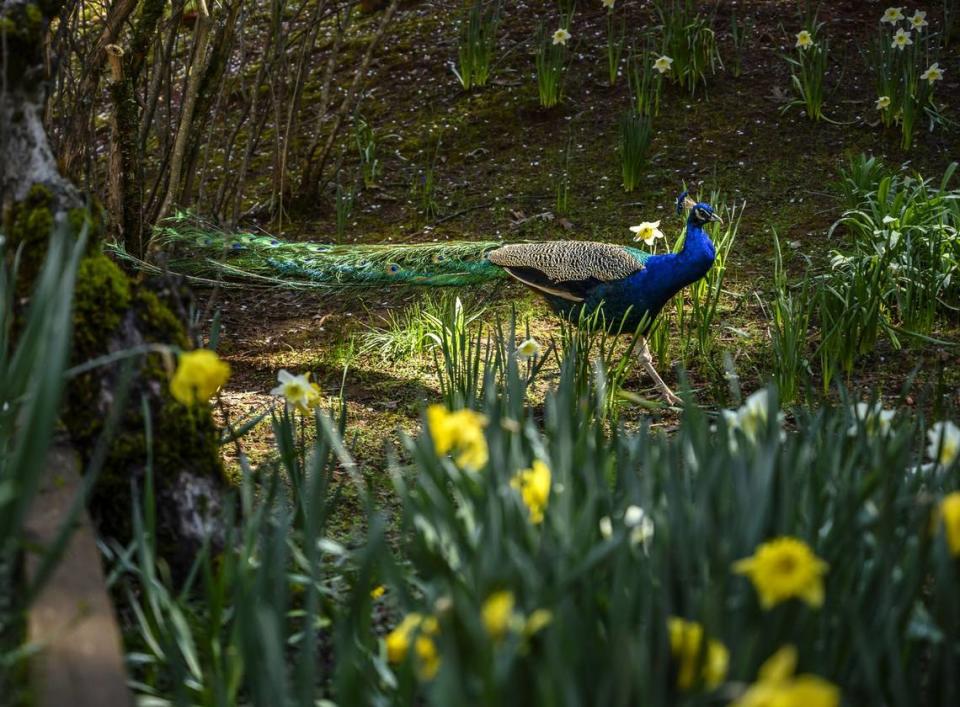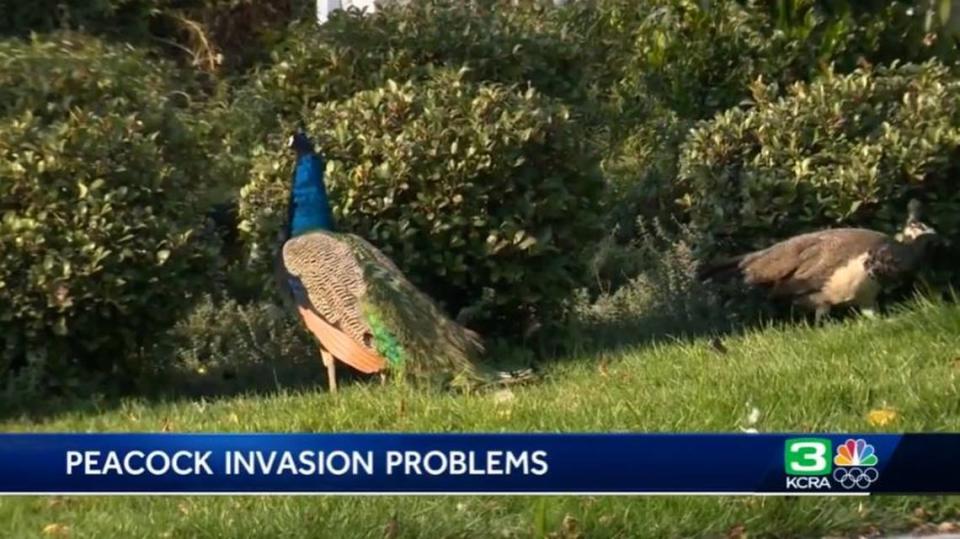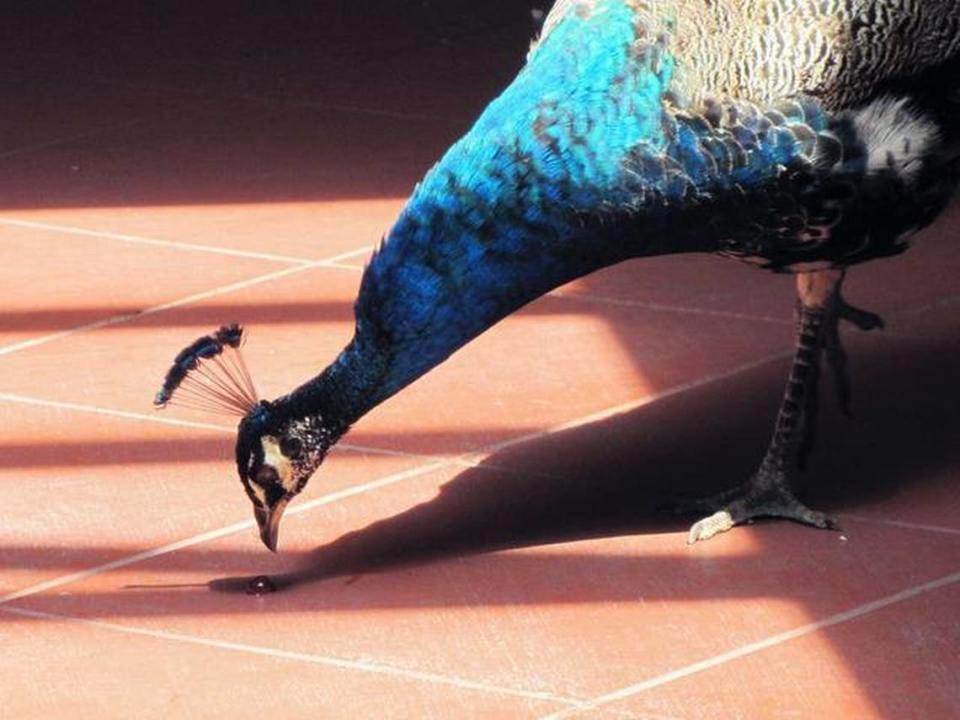Feral peacocks in Sacramento? Turkeys aren’t the only big birds strutting around
Uniquely is a Sacramento Bee series that covers the moments, landmarks and personalities that define what makes living in the Sacramento area so special.
You’ve likely seen wild turkeys roaming Sacramento parks, roosting in trees or strutting through crosswalks.
But what about feral peacocks? Yeah, they’re here too.
With their vibrant colors and iridescent fans of feathers, the exotic birds have been spotted in the Sacramento area for years, inspiring social media chatter whenever they pop up.
“Why didn’t y’all tell me about them wild peacocks?” Reddit user powergamerplus asked in March after discovering a “half dozen or so peacocks” at Sacramento’s Discovery Park. “I’ve known about the wild turkeys but I never knew we had wild peacocks as well.”
Other Reddit users reported seeing peafowl near a Northgate Boulevard freeway overpass and at the corner of 37th and P Street.
Although the birds are stunning to look at, they’re considered a nuisance in some California cities due to their aggressive behavior and loud, high-pitched cries.
Where can you spot peacocks in the Sacramento area? And why are they here?

Where can I see peacocks in Northern California?
Peafowl is the common name for two bird species that belong to the genus Pavo: blue or Indian peafowl, which are originally from the Indian subcontinent and green peafowl, which are native to Southeast Asia.
The big birds prefer seeds, insects, snails and snakes, but the omnivores will also eat pet food and plant seedlings.
Male peafowl, called peacocks, are known for their screeching calls and plumage, including a long train of feathers that’s displayed during courtship rituals. The duller-colored females are known as peahens.
Peacocks have been spotted in Discovery Park, 1600 Garden Highway in Sacramento, and in the surrounding Northgate area.
There has also been sightings of the colorful birds in Arden Arcade and Sacramento’s midtown area.
Elsewhere in Northern California, the cities of Tracy and Fairfield have both reported large, roaming flocks of feral peafowl.

Why are there feral peacocks in Sacramento?
The peacocks at Discovery Park may be coming in from Camp Pollock, an 11-acre park and camping area in the Lower American River Parkway, according to Amy Rodrigues, communications and marketing director for the Sacramento Valley Conservancy.
The conservancy has been managing Camp Pollock since 2013, Rodrigues said.
“We inherited some peacocks and there’s still a small flock often seen on site,” she said.
However, it’s unclear how the birds actually got to Camp Pollock — or why they’ve stuck around.
Rodrigues said she’s heard stories that someone at the now-demolished Riverdale Mobile Park would feed the birds.
Another possibility is that previous Camp Pollock caretakers would feed and care for the birds.
Either way, the birds have become popular among visitors, Rodrigues said.

Why are peacocks such a problem?
Despite their beauty, peacocks are an “invasive animal species” that can damage the environment, according to Francine Bradley, a UC Cooperative Extension poultry specialist.
“They hurt native birds by eating their food and decimating the plants where the natives would live,” Bradley told UC Davis in 2003. “They ruin plants put on hillsides to prevent erosion.”
“In neighborhoods, they scratch the paint on cars, damage shingles and tiles on roofs and cover lawns with fecal matter,” Bradley said.
Peafowl can also disturb landscaping and startle people with their piercing screams.
Some California cities have taken steps to remove the noisy, messy birds all together.
In 2021, the city of Tracy and a neighborhood homeowner’s association split a $30,000 bill to humanely relocate peacocks after the birds were caught scratching vehicles and causing traffic issues, The Sacramento Bee reported at the time.
The city of Fairfield paid $20,000 in February to trap and relocate approximately 115 peafowl roaming through Dunnell Nature Park and Education Center and the surrounding Rolling Hills area, according to the city website.
In Southern California, Rancho Palos Verdes has been working to manage its peafowl population since 2015 through census reporting, trapping and relocation in six neighborhoods. The city’s municipal code prohibits people from feeding peacocks.

What should I do if I see a feral peacock?
If you run into a peacock or peahen in a park or find one frolicking in your backyard, it’s best to keep your distance.
Male peacocks have sharp talons and can be “extremely aggressive,” the Los Angeles County Arboretum & Botanic Garden said on its website.
That’s especially true during mating season, which lasts from early spring to early summer.
“Peafowl are ... disturbed by loud noises and human behavior,” the arboretum said on its website. “It is best not to startle them as they can move quickly and be aggressive.”
Here are some tips on what to do if you encounter a peacock, according to the arboretum’s website:
Stay 10 feet away from peafowl.
Don’t eat or have food around peafowl.
Do not disturb the birds.
Keep quiet and move slowly.
Don’t leave children alone with the birds.
How can I keep peafowl out of my yard?
Below are some tips to keep peafowl out of your yard or garden, according to the Rancho Palos Verdes city website:
Avoid planting tender seedlings in areas of your yard that you don’t want peafowl to visit.
Cat repellents and mothballs are an effective way to keep peacocks out of gardens.
Peacocks are afraid of dogs and water. Walking your dog around your property or turning on the sprinklers will keep peacocks away and acts a “negative reinforcement for the bird.”
Peacocks like to eat seeds, bugs and worms. If you’re composting, keep your composting area as clean as possible.
Peafowl also enjoy eating bread, bird seeds and pet food. Once the animals is “hooked, its difficult to wean them off,” the site said, so remove any leftover pet food that’s outside.
What do you want to know about life in Sacramento? Ask our service journalism team your top-of-mind questions in the module below or email servicejournalists@sacbee.com.

